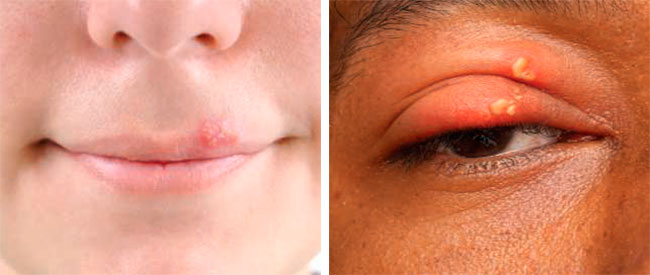Understanding Herpes Simplex 1 and Its Implications in the Cosmetology Practice: An In-Depth Analysis
Cosmetologists serve on the frontlines of skin health and beauty, which often necessitates recognizing common skin conditions and knowing when to refer clients to healthcare professionals. Herpes Simplex Virus 1 (HSV-1), a common and contagious viral infection, is a prime example. Understanding HSV-1 and its implications for the cosmetology profession is vital to maintaining a safe and healthy environment for clients and practitioners alike. This comprehensive article explores the nature of HSV-1, its relevance to the cosmetology profession, and the essential steps cosmetologists can take upon encountering it.

Herpes Simplex
Herpes Simplex Virus 1: A Brief Overview
Herpes Simplex Virus 1, commonly known as oral herpes, is a recurrent viral infection that frequently manifests as fever blisters or cold sores. However, many people carry the virus without exhibiting symptoms. When symptoms do arise, they typically include the appearance of one or more blisters on a red, swollen base. These blisters commonly appear on the lips, nostrils, or other facial areas, with sores persisting for up to three weeks. HSV-1 is contagious, requiring careful management when identified.

HSV-1 and the Cosmetology Practice
Cosmetologists must be familiar with HSV-1 due to their close contact with clients’ skin. Recognizing signs of a potential outbreak, such as a tingling sensation or redness on the lips or around the mouth, can prevent the spread of the virus within the salon environment. The symptoms to watch out for include:
- Single or clustered blisters on a red, swollen base
- Fever blisters or cold sores
- Tingling or itching around the mouth or nose prior to an outbreak
If a cosmetologist identifies any of these symptoms, they must take immediate action.
Managing Clients with HSV-1
The contagious nature of HSV-1 necessitates a careful approach. Upon identifying signs of a potential HSV-1 outbreak, the cosmetologist should postpone the client’s appointment and refer them to a healthcare provider for a medical evaluation. This referral not only ensures the client receives appropriate treatment but also safeguards the cosmetologist and future clients from potential exposure.
Preventing the Spread of HSV-1 in the Cosmetology Environment
The potential spread of HSV-1 within a cosmetology practice calls for stringent sanitation practices. These include:
- Sterilization of tools: All tools should be thoroughly cleaned and sterilized before and after use.
- Personal hygiene: Frequent hand washing and avoidance of touching one’s face, especially the eyes, nose, and mouth, are critical.
- Use of gloves: When performing close contact services, cosmetologists should consider wearing gloves to minimize the risk of viral transmission.
Educating Clients About HSV-1
Cosmetologists should also play an active role in educating clients about HSV-1, including its symptoms, transmission modes, and the importance of rescheduling their appointment if they suspect an outbreak. Client education is a powerful tool in maintaining a safe and healthy salon environment.
Herpes Simplex Virus 1 is a common and contagious condition that has direct implications for cosmetologists. By understanding HSV-1 and the necessary actions when encountering it, cosmetologists can effectively maintain the health and safety of their clients and themselves, while also ensuring their practice’s continued success. Through early identification, appropriate referral, and stringent hygiene practices, cosmetologists can effectively manage the impact of HSV-1 within their profession.






